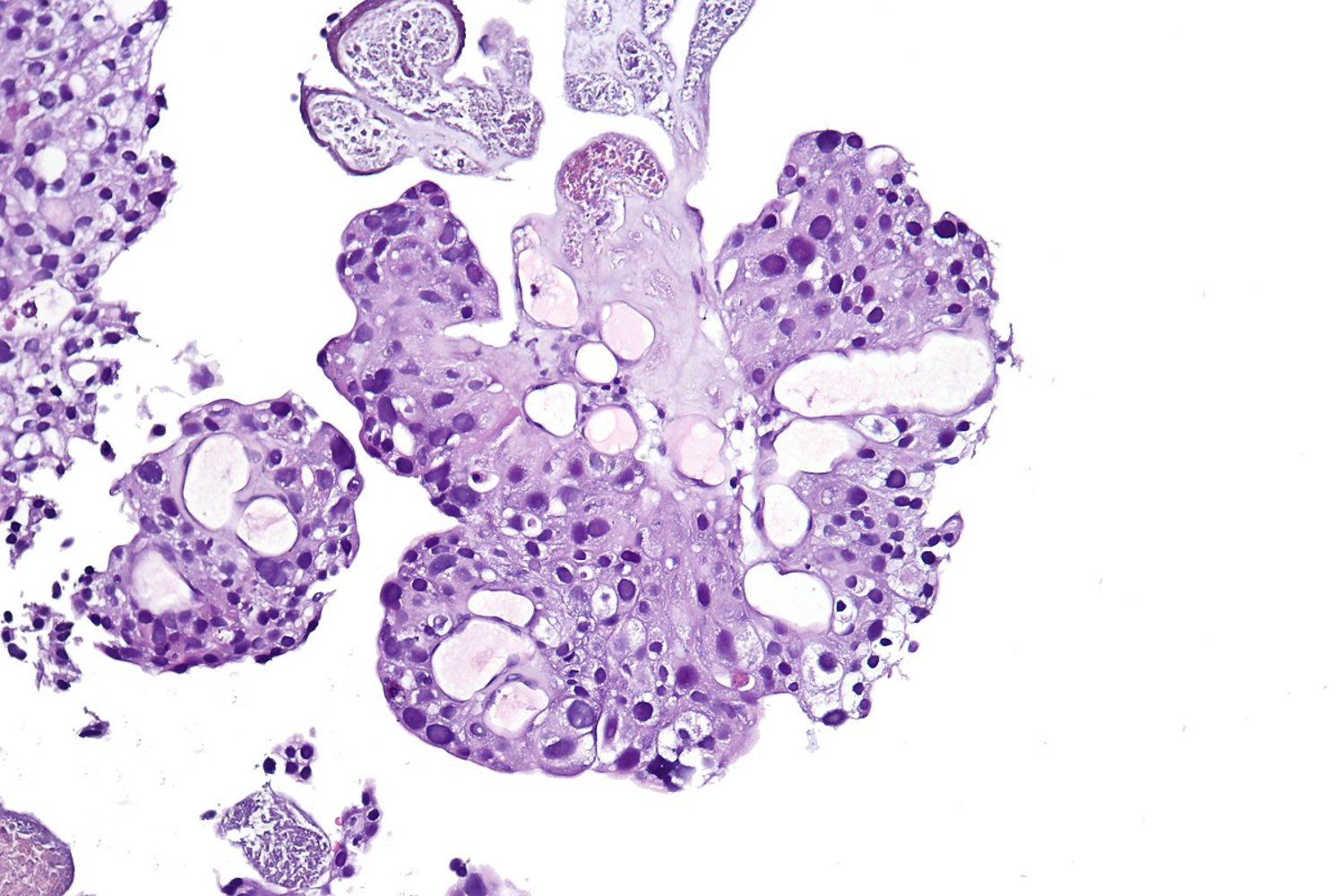Urinary tract cancer most commonly involves the bladder, although it may also occur in the renal pelvis, ureters, and, rarely, the urethra.
Epidemiology
- Cancer sites
- Bladder (90%)
- Renal pelvis and renal calyces (8%)
- Ureter and urethra (2%)
- Histological types
- Transitional cell (urothelial) carcinoma: most common (∼ 95%) type of cancer of the bladder, ureter, renal pelvis, and proximal urethra in male individuals
- Squamous cell carcinoma: most common (∼ 60%) type of cancer of the distal urethra in male individuals and the entire urethra in female individuals
Risk factors
Transitional cell urothelial carcinoma
- Carcinogens
- Tobacco (esp. due to 2-naphthylamine in cigarette smoke)
- Aromatic amines (e.g., benzidine, aniline dye, azo dye, arylamines)
- Medications
- Cyclophosphamide
- Phenacetin
- High-dose, long-term pioglitazone treatment [11]
- Heavy metals (e.g., chlorine and arsenic content in drinking water)
Pathology
- Papillary urothelial carcinoma
- A thick papilla with a fibrovascular core

- A thick papilla with a fibrovascular core
- Squamous cell carcinoma
- Chronic inflammatory stimuli (e.g., schistosomiasis, chronic cystitis) can lead to transformation of urothelial cells into squamous epithelial cells (squamous metaplasia)